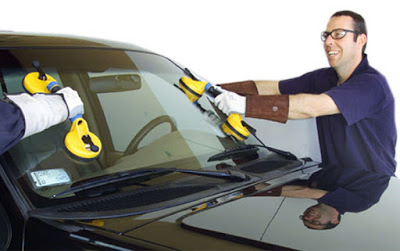 You probably know that automotive glass is different than regular glass. Regular glass is brittle and if broken, fractures into large, sharp pieces. Today, there are two types of glass used in cars; the windshield is “laminated glass,” which stays intact if broken and the rest of the windows are “tempered glass,” which breaks into small nuggets if broken. Like much of automotive technology, there are interesting stories behind the development of both types of glass, and we will delve into both of them in this article.
You probably know that automotive glass is different than regular glass. Regular glass is brittle and if broken, fractures into large, sharp pieces. Today, there are two types of glass used in cars; the windshield is “laminated glass,” which stays intact if broken and the rest of the windows are “tempered glass,” which breaks into small nuggets if broken. Like much of automotive technology, there are interesting stories behind the development of both types of glass, and we will delve into both of them in this article.
The early days
Automobiles in the early 1900s had windshields made of “plate glass.” This is your standard kind of glass, such as what you see in house windows. Plate glass has been made for hundreds of years and its characteristics are well known. It is also quite inexpensive. The problem, of course, is that when it breaks, it “fractures” into large, knife-like shards which are extremely hazardous, especially during car accidents.
The first tempered glass
Glass manufacturers knew for centuries that glass that was heated up and then cooled rapidly becomes “tempered.” Tempered glass is 4 to 5 times stronger that regular glass and when it breaks, it collapses into a pile of small chucks of glass. The problem was that it was hard to manufacture consistently so it was never really used for commercial purposes. When the automobile manufacturers began asking for a safer alternative to plate glass, many of the glass producers experimented with the mass production of tempered glass. The first to come up with a consistent method was Achille Verlay, a chemist who worked at French glassmaker Saint-Gobain. The year was 1929. As soon as it was available, the automotive industry started purchasing the new tempered glass.
The first laminated glass
Windshields are different. After all, as the folks at Dublin Chrysler of Dublin, GA, a Chrysler, Dodge, Jeep, Ram dealer put it: “When you are driving, you don’t want a windshield that shatters into little pieces every time a small rock off of it.” That would be very dangerous in itself (just imagine driving at 55 MPH and your windshield disintegrates). What you need is glass that doesn’t break very easily. This problem was solved by another Frenchman, Édouard Bénédictus, in the late 1920s. He was the first to construct laminated glass. Laminated glass has multiple layers. A layer of vinyl laminate is sealed between two layers of composite glass. By the late 1920s, laminated glass began to be used for windshields in most American automobiles.
The Federal Government gets involved
The National Highway Traffic Safety Administration (NHTSA) was formed in 1970. The NHTSA began testing products and setting government safety standards. The NHTSA conducts special crash investigations to review how auto glass responds to such things as different levels of motor vehicle impacts, occupant ejections, and object penetration. In the event that defects are found, the administration works with the manufacturers to correct problems.
Automotive glass continues to evolve
The auto glass industry remains steadfast in the products that work. We can expect for laminated and tempered glass to remain the primary types of vehicle safety glass for many years to come. However, research is constantly looking at ways to make these reliable products even better.

